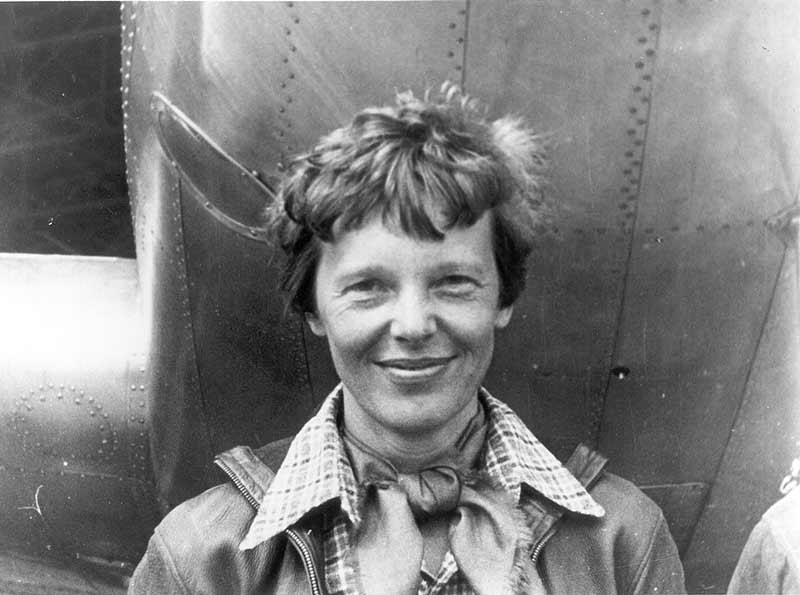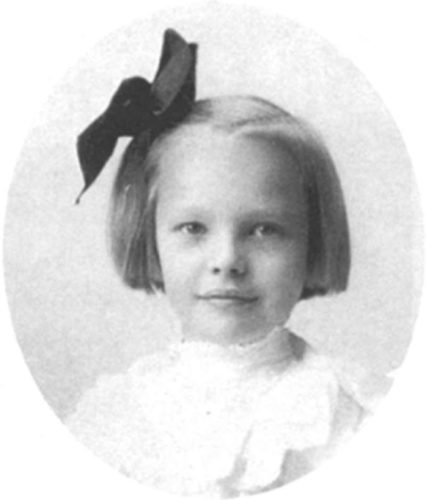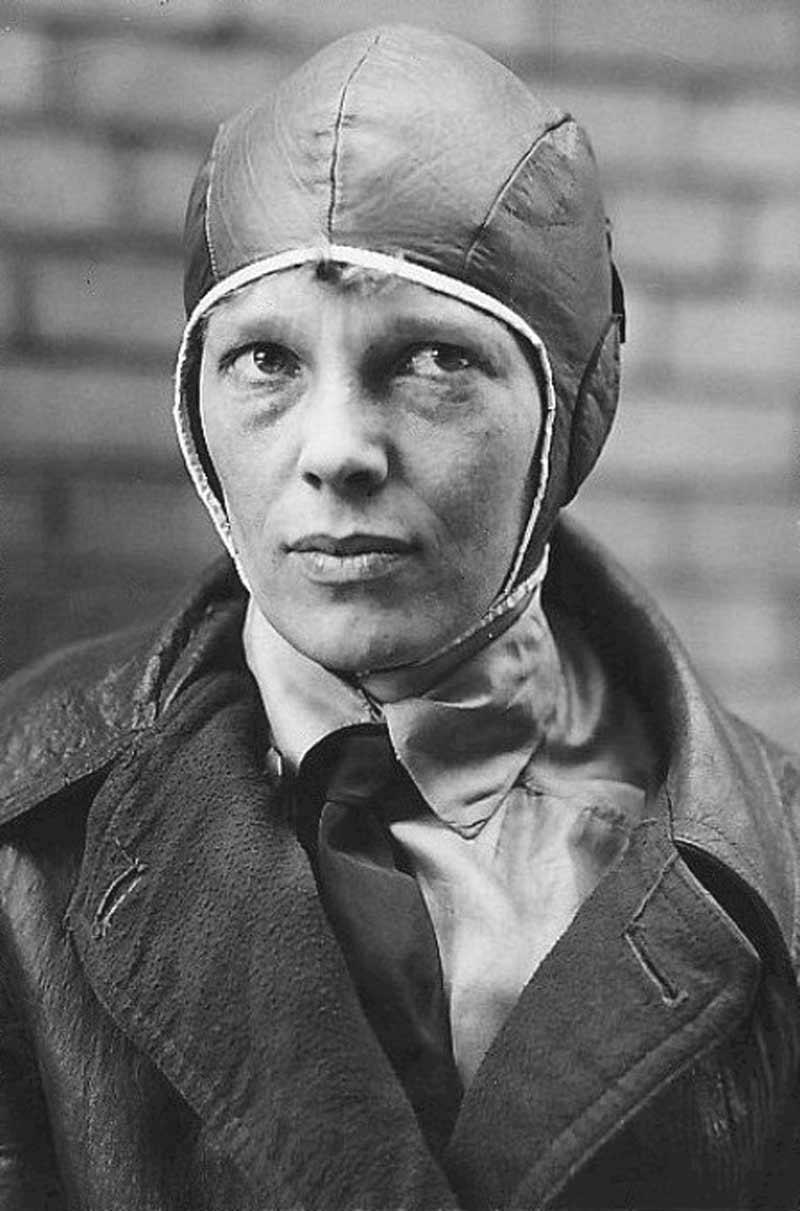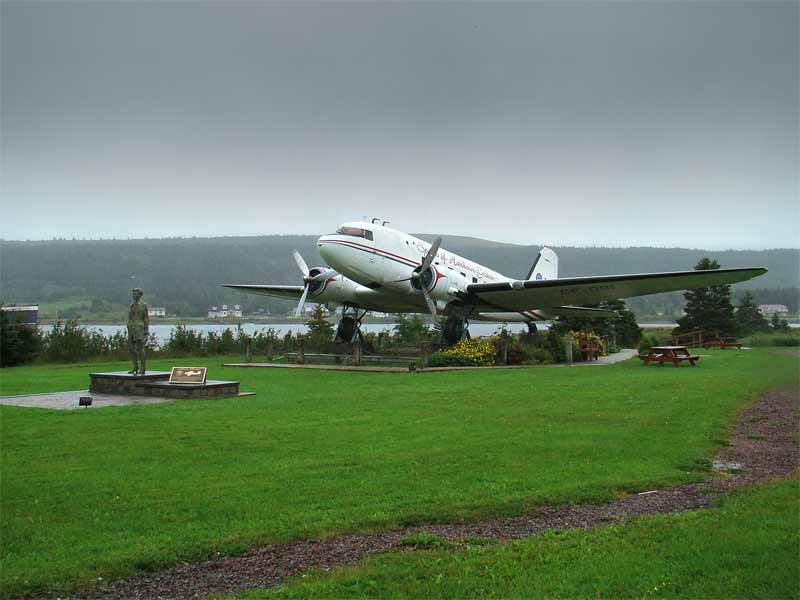
Amelia Earhart standing under nose of her Lockheed Model 10-E Electra.[Wikipedia]
Not only did she complete two record-breaking flights from Newfoundland, Earhart also found her passion for flying in Toronto.
“Given her status as an aviation icon, it is interesting to note that she may have been bitten by the flying ‘bug’ in Canada,” wrote Major William March, a Royal Canadian Air Force historian for the Directorate of Air Force History and Heritage.
And as the flight that turned her from a record-breaking Kansan into an international icon celebrates its 91st anniversary on May 20, Earhart’s Canadian history made her a sensation to be celebrated on both sides of the U.S.-Canadian border.

Earhart as a child. [Wikipedia]
During her Christmas holiday in 1917, Earhart visited her sister—and a walk down King Street changed her life completely.
Witnessing Canadian soldiers returning from the First World War, Earhart was later recorded saying, “there for the first time I realized what the World War meant…men without arms and legs, men who were paralyzed and men who were blind.”
Earhart soon joined her sister in Toronto, working in the Voluntary Aid Detachment in the Spadina Military Hospital. During her days off, however, she met Canadian pilots of the Royal Flying Corps at a local stable, and this meet-and-greet led to an invitation to Armour Heights, an air training facility north of the city.
In the winter of 1918, she was a guest of No. 21 Canadian Training Squadron and witnessed pilots training in roaring Curtiss JN-4s.
Her experience at Armour Heights not only brought Earhart momentary excitement, but it also spurred a lifelong interest in flying. She later wrote: “The interest aroused in me in Toronto led me to all the air circuses in the vicinity.”
And 10 years later, this vicinity expanded to Newfoundland.
Earhart spent the next 10 hours with flames biting her from the vent.
Throughout the early 20th century, Newfoundland had been a hot spot for many firsts in aviation, including a departure point for the first transatlantic flight and a refuelling stop for the first around-the-world flight.
In 1928, Earhart departed as a plane passenger from Trepassey, Nfld., a small fishing community on the island’s Avalon Peninsula, and upon the flight’s completion, became the first woman to cross the Atlantic by air. However, for Earhart, this wasn’t enough. Craving more than just a backseat lifestyle, she wanted to pilot a plane herself—alone—across the Atlantic.
On May 19, 1932, Earhart’s Lockheed Vega, a single-engine monoplane, landed at Harbour Grace, Nfld., at 2 p.m. She was joined by her mechanic and renowned Norwegian aviator Bernt Balchen.
Resting for a few hours at Cochrane Hotel, the hostess gifted Earhart tomato juice and a Thermos of soup—her only sustenance before she embarked on her 15-hour transatlantic flight.

Photo of Amelia Earhart prior to her transatlantic crossing of June 17, 1928. [Wikipedia]
In a book written by Bill Parsons and Bill Bowman, Earhart later said: “All of a sudden, I ran into rain squalls and heavy wind. Then my exhaust manifold burnt out and bright red flames began shooting out the side.”
Earhart spent the next 10 hours with flames biting her from the vent.
As she held her grip on an increasingly precarious flight, her altimeter broke and ice formed on the plane’s wings.
Earhart commented that she had never experienced this in 10 years of flying.
Her aircraft struggling, Earhart could have pushed on to Paris, where Charles Lindbergh had completed the first solo transatlantic flight in 1927, but she decided to land in a cow pasture in Culmore, a hamlet north of Londonderry, Northern Ireland. The owners of the pasture invited her in for a warm meal and a much-deserved rest.
Earhart had become the first woman to fly across the Atlantic by herself. She won many awards for her feat, including the National Geographic Society’s Gold Medal, the U.S. Congress Distinguished Flying Cross and the Cross of the Knight from the French Legion of Honour.
“Amelia Earhart came perhaps before her time,” said U.S. combat veteran and aviation historian Walter J. Boyne many years later. “The smiling, confident, capable, yet compassionate human being, is one of which we can all be proud.”

Harbour Grace, Avalon Peninsula, Newfoundland. The Spirit of Harbour Grace and monument to Amelia Earhart.[Wikipedia]
Advertisement


















